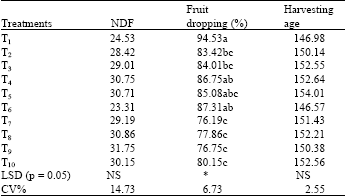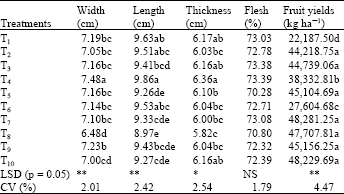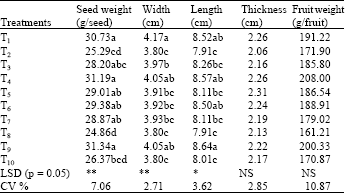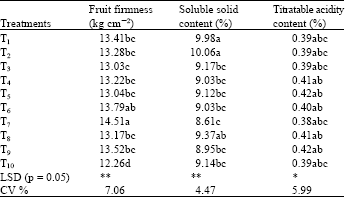Research Article
Effect of Chemical Paclobutrazol on Fruit Development, Quality and Fruit Yield of Kaew Mango (Mangifera indica L.) in Northeast Thailand
Department of Agricultural Technology, Faculty of Technology, Mahasarakham University, Mahasarakham Province 44000, Thailand
P. Chutichudat
Department of Agricultural Technology, Faculty of Technology, Mahasarakham University, Mahasarakham Province 44000, Thailand
K. Boontiang
Department of Agricultural Technology, Faculty of Technology, Mahasarakham University, Mahasarakham Province 44000, Thailand
T. Chanaboon
Department of Agricultural Technology, Faculty of Technology, Mahasarakham University, Mahasarakham Province 44000, Thailand












